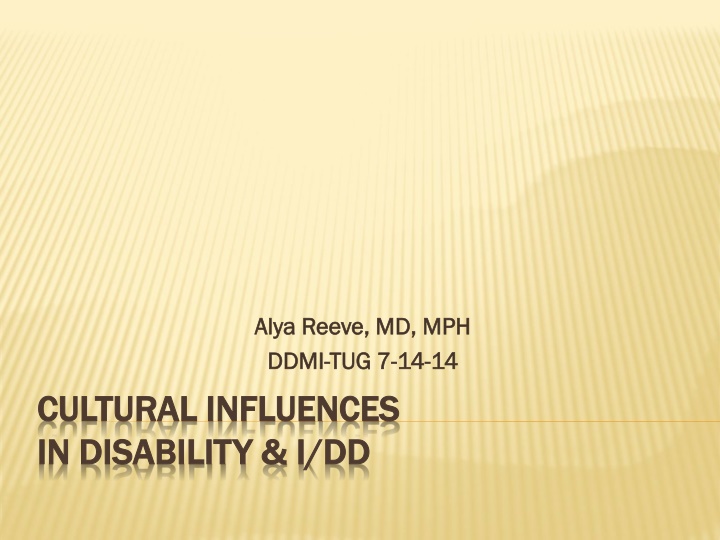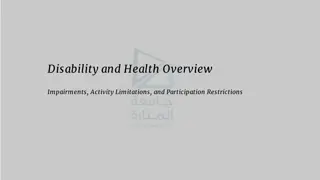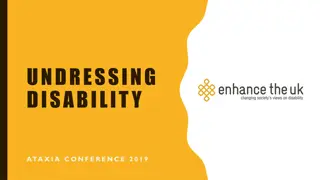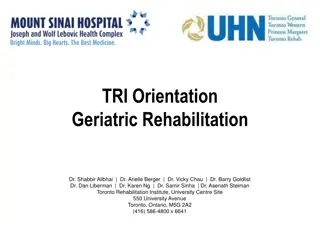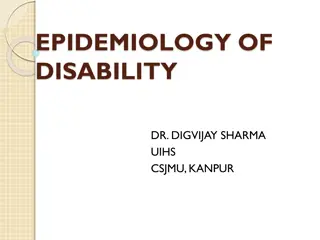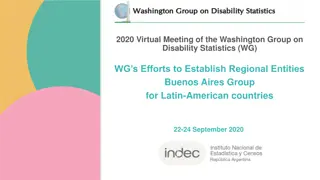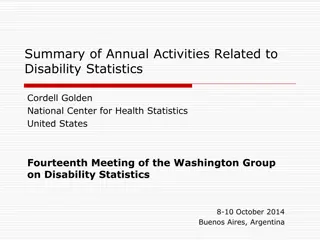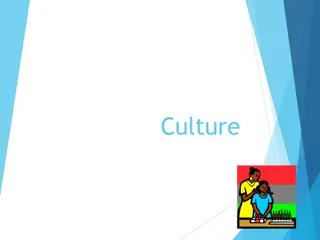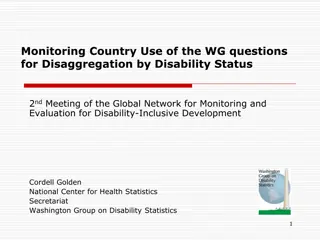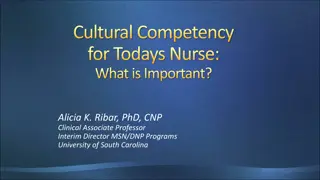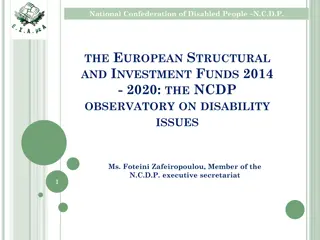Cultural Influences on Disability: Understanding the Impact of Diverse Beliefs
Culture plays a pivotal role in shaping attitudes towards disability. It influences how various cultural groups perceive and interact with individuals with intellectual and developmental disabilities (I/DD). Understanding cultural assumptions and subcultures is essential in providing effective services and support to diverse populations.
Download Presentation

Please find below an Image/Link to download the presentation.
The content on the website is provided AS IS for your information and personal use only. It may not be sold, licensed, or shared on other websites without obtaining consent from the author.If you encounter any issues during the download, it is possible that the publisher has removed the file from their server.
You are allowed to download the files provided on this website for personal or commercial use, subject to the condition that they are used lawfully. All files are the property of their respective owners.
The content on the website is provided AS IS for your information and personal use only. It may not be sold, licensed, or shared on other websites without obtaining consent from the author.
E N D
Presentation Transcript
Alya Reeve, MD, MPH Alya Reeve, MD, MPH DDMI DDMI- -TUG 7 TUG 7- -14 14- -14 14 CULTURAL INFLUENCES CULTURAL INFLUENCES IN DISABILITY & IN DISABILITY & I I/ /DD DD
WHAT IS CULTURE? WHAT IS CULTURE? Culture can be defined as the ways people Culture can be defined as the ways people live with each other, differentiating live with each other, differentiating themselves from other groups of people. themselves from other groups of people. Culture reflects an integrated system of learned Culture reflects an integrated system of learned behavior patterns characteristic of a society behavior patterns characteristic of a society that are not a result of biological inheritance. that are not a result of biological inheritance. It is often expressed by customary beliefs and It is often expressed by customary beliefs and social forms of a group. social forms of a group. Can you cite examples of culture?... Can you cite examples of culture?...
WE ARE INFLUENCED BY CULTURE(S) WE ARE INFLUENCED BY CULTURE(S) All people are affected by and reflect their All people are affected by and reflect their culture. culture. Attitudes about I/DD differ in Hispanic, Native Attitudes about I/DD differ in Hispanic, Native- - American, African American, African- -American, Mid American, Mid- -Eastern, Asian, and European cultural groups in the US. Asian, and European cultural groups in the US. Disabilities can create their own subcultures. Disabilities can create their own subcultures. Cultural differences affect attitudes toward Cultural differences affect attitudes toward disability and even acceptance of services disability and even acceptance of services Eastern,
CULTURES WITHIN CULTURES CULTURES WITHIN CULTURES Habits and attitudes are learned as part Habits and attitudes are learned as part of socialization. of socialization. Attitudes affect expectations of and Attitudes affect expectations of and opportunities provided to people with I/DD. opportunities provided to people with I/DD. Assessment of adaptive behavior Assessment of adaptive behavior functioning needs must take into account functioning needs must take into account some biases of current assessment some biases of current assessment tools. tools.
CULTURAL ASSUMPTIONS CULTURAL ASSUMPTIONS People with disability all have low IQ People with disability all have low IQ If people do not talk, they do not If people do not talk, they do not understand understand Sensory problems often form sub Sensory problems often form sub- - cultures, with short cultures, with short- -hands of communication and self communication and self- -identification Religious and regional variations Religious and regional variations hands of identification
FACTORS AFFECTING BEHAVIOR FACTORS AFFECTING BEHAVIOR Attitudes toward Attitudes toward Disability Disability Family Structure Family Structure Urban Urban Rural Family Training & Family Training & Disciplinary Practices Disciplinary Practices Gender Gender Inclusion Inclusion Protection SES & Education SES & Education Communication Styles Communication Styles Acculturation Acculturation Mental Health Issues Mental Health Issues Language Barriers Language Barriers Religion Religion Rural Protection
ASSESSMENT OF ADAPTIVE BEHAVIOR ASSESSMENT OF ADAPTIVE BEHAVIOR Informant Selection Informant Selection Cultural Communication Styles Cultural Communication Styles Informant Interviews Informant Interviews Evaluation of Opportunity vs. Ability Evaluation of Opportunity vs. Ability Norm Norm- -based Assessment vs. Service based Assessment vs. Service Planning Information Planning Information
ADAPTIVE BEHAVIOR ASSESSMENT ADAPTIVE BEHAVIOR ASSESSMENT Adaptive behavior expectations: Adaptive behavior expectations: The training in how to apply existing assessment The training in how to apply existing assessment tools needs to include specific attention to tools needs to include specific attention to influences of culture on opportunities and missed influences of culture on opportunities and missed opportunities for people with I/DD and other opportunities for people with I/DD and other disabilities. disabilities. The biases of current assessment tools have to be The biases of current assessment tools have to be part of the developing awareness in using these part of the developing awareness in using these tools and the push to develop more appropriate and tools and the push to develop more appropriate and attuned tools in the future. attuned tools in the future.
IMPORTANCE IMPORTANCE Inclusion Inclusion Interpretation of attitude Interpretation of attitude Professionals Professionals Clients Clients Adaptation of tests Adaptation of tests Making sure real problems are identified Making sure real problems are identified Strengths be properly assessed and Strengths be properly assessed and supported supported
INCREASE AWARENESS INCREASE AWARENESS Discussions Discussions For teams concerning challenging situations For teams concerning challenging situations Guardians, teachers, other professionals Guardians, teachers, other professionals Case Case- -sharing sharing Clinical review; Clinical review; Mentoring; Mentoring; Supervision; Supervision; Training Training
INCREASE AWARENESS INCREASE AWARENESS Direct teaching Direct teaching Professional training classes Professional training classes Informal mentoring in public settings Informal mentoring in public settings Biographies Biographies People with disabilities telling their experiences People with disabilities telling their experiences Oral and written formats Oral and written formats Validation of struggles and successes in overcoming Validation of struggles and successes in overcoming barriers barriers
LANGUAGE OF INCLUSION LANGUAGE OF INCLUSION People First People First person with conditions person with conditions Having respect for traditions Having respect for traditions Eye gaze Eye gaze Greetings; names Greetings; names An open An open- -ness about disability v. ness about disability v. challenges in functioning challenges in functioning
CONCLUSIONS CONCLUSIONS Culture is all around us. Culture is all around us. If we do not talk about how we are If we do not talk about how we are individually and collectively influenced individually and collectively influenced by culture we do ourselves disservice. by culture we do ourselves disservice. We will commit unnecessary errors of We will commit unnecessary errors of judgment and assessment that will not judgment and assessment that will not produce the intended supports for produce the intended supports for people with I/DD people with I/DD.
